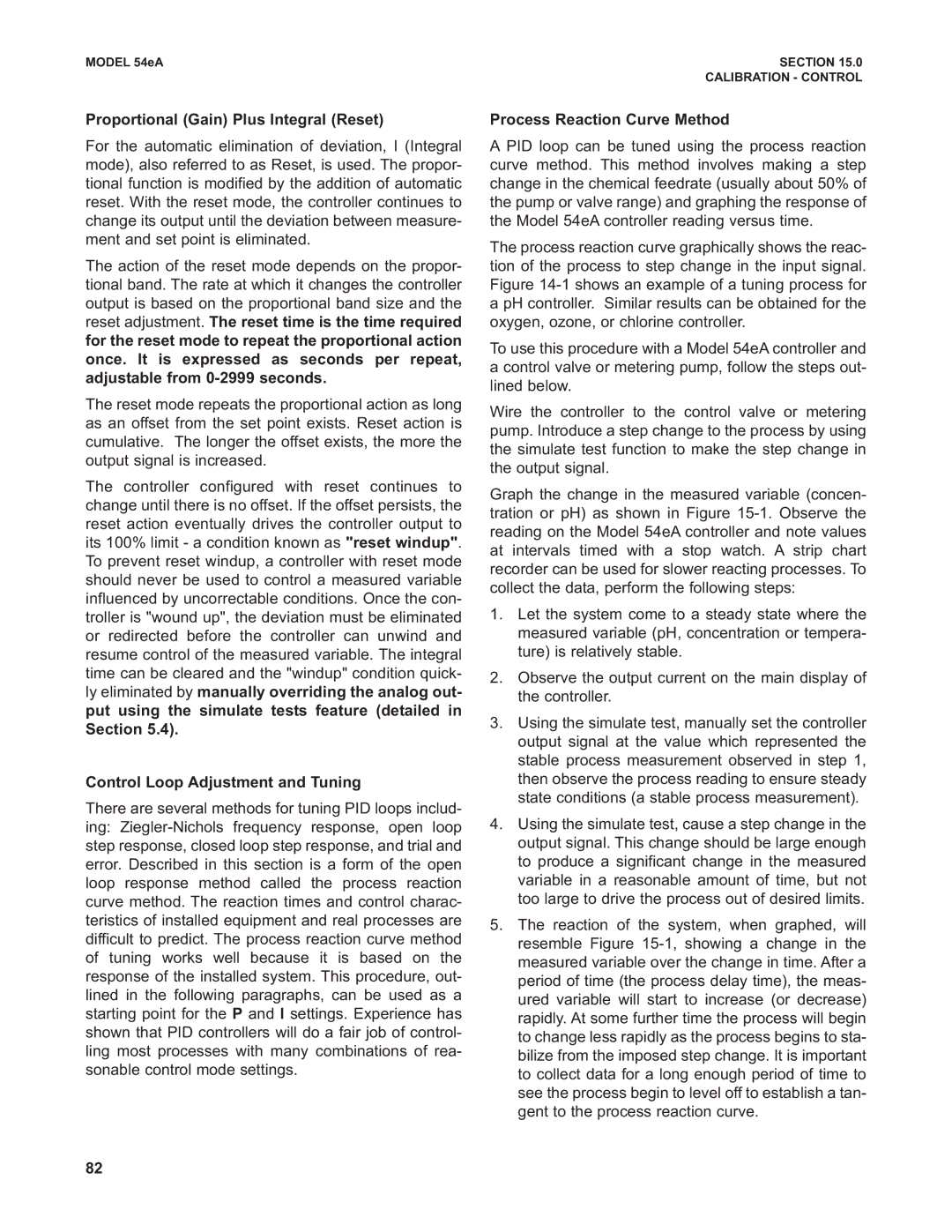MODEL 54eA | SECTION 15.0 |
| CALIBRATION - CONTROL |
Proportional (Gain) Plus Integral (Reset)
For the automatic elimination of deviation, I (Integral mode), also referred to as Reset, is used. The propor- tional function is modified by the addition of automatic reset. With the reset mode, the controller continues to change its output until the deviation between measure- ment and set point is eliminated.
The action of the reset mode depends on the propor- tional band. The rate at which it changes the controller output is based on the proportional band size and the reset adjustment. The reset time is the time required for the reset mode to repeat the proportional action once. It is expressed as seconds per repeat, adjustable from
The reset mode repeats the proportional action as long as an offset from the set point exists. Reset action is cumulative. The longer the offset exists, the more the output signal is increased.
The controller configured with reset continues to change until there is no offset. If the offset persists, the reset action eventually drives the controller output to its 100% limit - a condition known as "reset windup". To prevent reset windup, a controller with reset mode should never be used to control a measured variable influenced by uncorrectable conditions. Once the con- troller is "wound up", the deviation must be eliminated or redirected before the controller can unwind and resume control of the measured variable. The integral time can be cleared and the "windup" condition quick- ly eliminated by manually overriding the analog out- put using the simulate tests feature (detailed in Section 5.4).
Control Loop Adjustment and Tuning
There are several methods for tuning PID loops includ- ing:
Process Reaction Curve Method
A PID loop can be tuned using the process reaction curve method. This method involves making a step change in the chemical feedrate (usually about 50% of the pump or valve range) and graphing the response of the Model 54eA controller reading versus time.
The process reaction curve graphically shows the reac- tion of the process to step change in the input signal. Figure
To use this procedure with a Model 54eA controller and a control valve or metering pump, follow the steps out- lined below.
Wire the controller to the control valve or metering pump. Introduce a step change to the process by using the simulate test function to make the step change in the output signal.
Graph the change in the measured variable (concen- tration or pH) as shown in Figure
1.Let the system come to a steady state where the measured variable (pH, concentration or tempera- ture) is relatively stable.
2.Observe the output current on the main display of the controller.
3.Using the simulate test, manually set the controller output signal at the value which represented the stable process measurement observed in step 1, then observe the process reading to ensure steady state conditions (a stable process measurement).
4.Using the simulate test, cause a step change in the output signal. This change should be large enough to produce a significant change in the measured variable in a reasonable amount of time, but not too large to drive the process out of desired limits.
5.The reaction of the system, when graphed, will resemble Figure
82
